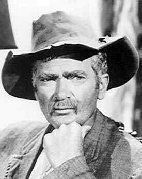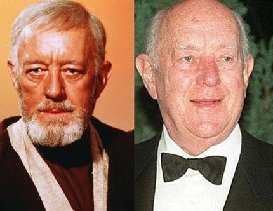Kansas (/ˈkænzəs/ ⓘ KAN-zəss) is a landlocked state in the Midwestern region of the United States. It borders Nebraska to the north; Missouri to the east; Oklahoma to the south; and Colorado to the west. Kansas is named after the Kansas River, in turn named after the Kansa people. Its capital is Topeka, and its most populous city is Wichita, however the largest urban area is the bi-state Kansas City, MO–KS metropolitan area.
For thousands of years, what is now Kansas was home to numerous and diverse Indigenous tribes. The first settlement of non-indigenous people in Kansas occurred in 1827 at Fort Leavenworth. The pace of settlement accelerated in the 1850s, in the midst of political wars over the slavery debate. When it was officially opened to settlement by the U.S. government in 1854 with the Kansas–Nebraska Act, conflict between abolitionist Free-Staters from New England and pro-slavery settlers from neighboring Missouri broke out over the question of whether Kansas would become a free state or a slave state, in a period known as Bleeding Kansas. On January 29, 1861, Kansas entered the Union as a free state, hence the unofficial nickname "The Free State". Passage of the Homestead Acts in 1862 brought a further influx of settlers, and the booming cattle trade of the 1870s attracted some of the Wild West's most iconic figures to western Kansas.
As of 2015, Kansas was among the most productive agricultural states, producing high yields of wheat, corn, sorghum, and soybeans. In addition to its traditional strength in agriculture, Kansas possesses an extensive aerospace industry. Kansas, which has an area of 82,278 square miles is the 15th-largest state by area, the 36th most-populous of the 50 states, with a population of 2,940,865 according to the 2020 census, and the 10th least densely populated. Residents of Kansas are called Kansans. Mount Sunflower is Kansas's highest point at 4,039 feet (1,231 meters).
Etymology
The name Kansas derives from the Algonquian term, Akansa, for the Quapaw people. These were a Dhegiha Siouan-speaking people who settled in Arkansas around the 13th century. The stem -kansa is named after the Kaw people, also known as the Kansa, a federally recognized Native American tribe. The tribe's name (natively kką:ze) is often said to mean "people of the (south) wind" although this was probably not the term's original meaning.
History
Before European colonization, Kansas was occupied by the Caddoan Wichita and later the Siouan Kaw people. Tribes in the eastern part of the state generally lived in villages along the river valleys. Tribes in the western part of the state were semi-nomadic and hunted large herds of bison. The first European to set foot in present-day Kansas was the Spanish conquistador Francisco Vázquez de Coronado, who explored the area in 1541.
Between 1763 and 1803 the territory of Kansas was integrated into Spanish Louisiana. The governor Luis de Unzaga 'le Conciliateur', during that period, promoted expeditions and good relations with the Amerindians, among the explorers were Antoine de Marigny and others who continued trading across the Kansas River, especially at its confluence with the Missouri River, tributaries of the Mississippi River.
In 1803, most of modern Kansas was acquired by the United States as part of the Louisiana Purchase. Southwest Kansas, however, was still a part of Spain, Mexico, and the Republic of Texas until the conclusion of the Mexican–American War in 1848, when these lands were ceded to the United States. From 1812 to 1821, Kansas was part of the Missouri Territory. The Santa Fe Trail traversed Kansas from 1821 to 1880, transporting manufactured goods from Missouri and silver and furs from Santa Fe, New Mexico. Wagon ruts from the trail are still visible in the prairie today.
In 1827, Fort Leavenworth became the first permanent settlement of white Americans in the future state. The Kansas–Nebraska Act became law on May 30, 1854, establishing Nebraska Territory and Kansas Territory, and opening the area to broader settlement by whites. Kansas Territory stretched all the way to the Continental Divide and included the sites of present-day Denver, Colorado Springs, and Pueblo.
20th century
In response to demands of Methodists and other evangelical Protestants, in 1881 Kansas became the first U.S. state to adopt a constitutional amendment prohibiting all alcoholic beverages, which was repealed in 1948. Anti-saloon activist Carrie Nation vandalized her first saloon in Kiowa in 1900. In 1922, suffragist Ella Uphay Mowry became the first female gubernatorial candidate in the state when she ran as "Mrs. W.D. Mowry". She later stated that, "Someone had to be the pioneer. I firmly believe that some day a woman will sit in the governor's chair in Kansas."
If you want to read a whole lot more, go here: https://en.wikipedia.org/wiki/Kansas
- SERVES
- 4
- COOK TIME
- 15 Min
Traditional German schnitzel is typically made with veal, but our version is made with budget-friendly and just-as-flavorful pork chops. Breaded, fried, and topped with a lemon-butter based sauce, our Pork Schnitzel makes for a sensational German-style dinner!
- 4 boneless pork loin chops
- 1/3 cup all-purpose flour
- 2 eggs
- 2 tablespoons milk
- 1 cup plain breadcrumbs
- 1/2 teaspoon salt
- 1/4 teaspoon black pepper
- 2 tablespoons vegetable oil
- 4 tablespoons butter, divided
- 1 tablespoon lemon juice
- 1/4 cup chicken broth
- 1 teaspoon chopped fresh parsley
- Place pork between 2 sheets of wax paper and flatten to 1/4-inch thickness with a meat mallet.
- In a shallow dish, place flour. In another shallow dish, beat egg and milk. In a third shallow dish, place breadcrumbs. Sprinkle salt and pepper evenly over both sides of pork.
- In a large skillet over medium heat, heat oil and 1 tablespoon butter.
- Dip pork in flour, then egg mixture, then in breadcrumbs, coating completely on both sides. Saute pork in batches, 3 to 5 minutes per side, or until no pink remains and pork is golden. Remove to a platter.
- Add remaining butter, the lemon juice, broth, and parsley to skillet; mix well and cook 1 to 2 minutes, or until sauce has thickened. Serve sauce over pork.














